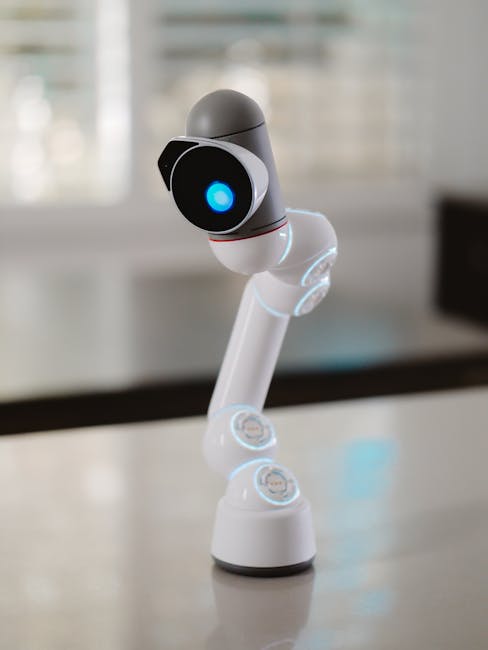AI-Powered Automation Gains Traction: n8n and OpenAI’s o3-Mini Integration Spurs Industry Change
OpenAI’s o3-Mini, a powerful new language model, has seen significant integration into workflow automation platforms in 2025, notably with n8n. This integration marks a significant leap in the capabilities of automated workflows, allowing for complex tasks to be handled with increased efficiency and sophistication. The growing popularity of this combination suggests a fundamental shift in how businesses approach automation strategies.
The Rise of n8n and OpenAI’s o3-Mini Integration
The open-source workflow automation tool n8n has become increasingly popular in 2025, partly due to its flexibility and community support. Its compatibility with a wide range of services and APIs, including OpenAI’s o3-Mini, makes it a preferred choice for developers seeking robust and customizable automation solutions. This year has witnessed a surge in the adoption of n8n for creating AI-driven workflows, fueled largely by the release of o3-Mini and its enhanced capabilities.
Enhanced Workflow Capabilities
The integration of o3-Mini into n8n allows for the creation of significantly more complex and intelligent automated workflows. Tasks that previously required manual intervention, or relied on less sophisticated automation tools, can now be handled automatically with far greater accuracy and efficiency. This integration empowers businesses to streamline a broader range of processes. Specific use cases are rapidly expanding and include improved customer support via AI-powered chatbots, data analysis and report generation, and automated content creation.
Impact on Various Sectors
The combined power of n8n and o3-Mini is impacting various sectors in 2025. In customer service, AI-driven chatbots are providing 24/7 support, leading to improved customer satisfaction and reduced operational costs. Marketing departments are leveraging the integration to personalize campaigns and enhance customer engagement. The financial sector is exploring applications in fraud detection and risk management. The adaptability of the platform ensures that the possibilities continue to expand as developers uncover new applications.
Key Sectors Adopting n8n/o3-Mini Integration
- Customer Service: Improved response times, personalized support, reduced agent workload.
- Marketing: Targeted campaigns, personalized content creation, automated social media management.
- Finance: Fraud detection, risk assessment, automated reporting and compliance.
- E-commerce: Personalized recommendations, automated order processing, improved inventory management.
- Healthcare: Streamlined administrative tasks, improved patient communication, data analysis for research.
Challenges and Limitations
While the n8n and o3-Mini integration offers significant advantages, challenges remain. The complexity of setting up and maintaining these advanced workflows requires skilled developers. Ensuring data security and privacy is also paramount, especially when dealing with sensitive information processed by the AI. The computational cost of running complex AI-powered workflows can also be a significant factor for smaller businesses.
Addressing the Challenges
Addressing these issues requires a multi-pronged approach. The development of user-friendly interfaces and readily available tutorials can simplify the setup process for less experienced users. Investing in robust security measures and adhering to data privacy regulations is crucial to build user trust. Furthermore, exploring cost-effective solutions, such as cloud-based computing services optimized for AI workloads, is vital for wider adoption.
Future Implications and Market Trends
The ongoing integration of AI into workflow automation platforms like n8n is expected to accelerate in 2025 and beyond. The trend is not just limited to OpenAI’s o3-Mini; other similar large language models are also likely to see similar integrations. This will lead to increasingly sophisticated and intelligent automated workflows across a wide spectrum of industries. This increased automation has the potential to increase productivity, reduce operational costs, and create new opportunities for businesses of all sizes.
Forecasting Future Developments
- Increased focus on user-friendly interfaces to broaden accessibility.
- Enhanced security features and compliance with data privacy regulations.
- Development of more cost-effective AI-powered workflows for smaller businesses.
- Emergence of specialized AI models tailored for specific industry applications.
- Growing demand for skilled developers specializing in AI-driven workflow automation.
Conclusion
The integration of OpenAI’s o3-Mini with n8n in 2025 represents a significant step forward in the field of workflow automation. This collaboration combines the power of a sophisticated language model with the flexibility of an open-source automation platform, providing businesses with tools to streamline operations and improve efficiency. While challenges remain, the long-term implications are significant, promising a future where AI-powered automation plays an increasingly central role in shaping the business landscape. Continued innovation and collaboration within the industry will be key to fully realizing the potential of these advancements.

